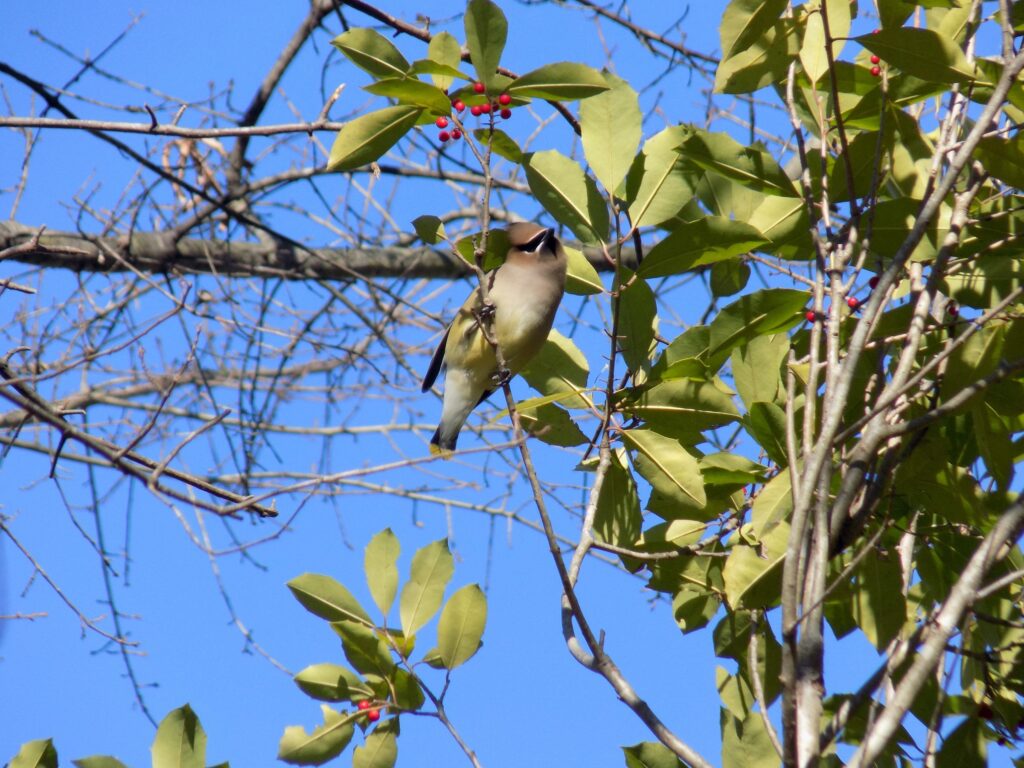




This week for Flora and Fauna Friday, we’re looking at a migratory bird that flocks to our area every winter. A golden-amber squeaky socialite; a crested berry bandit with Crayola crowned feathers. This week we’re taking a quick look at the Cedar Waxwing (Bombycilla cedrorum).
Cedar Waxwings are a medium sized songbird. They are a striking and unmistakable species. Their plumage is a blend of amber brown, golden yellow, shale gray, and snow white. The birds sport a black mask, prominent crest, bright yellow tipped tail feathers, and red waxy tips to their secondary wing feathers. Their call is a short high pitched whistle and buzz. Their whistle is very reminiscent of a distant, squeaky brake pad. (So much so that I’ve often wondered how many brake pads have been officially recorded as Cedar Waxwings during ornithological surveys.)
Like many bird species, Cedar Waxwings visit our state in the winter in search of food and warmth. They typically travel in flocks of a half dozen to several dozen birds, but rarely alone. They can usually be found perched at the tops of hardwood trees or feeding in fruit bearing trees and shrubs. Cedar Waxwings are one of the few birds in our area that feed almost exclusively on fruit. Around here you can typically find them gorging themselves on the berries of Holly, Privet, Dogwood, Cherry, Honeysuckle, Crabapple, Mistletoe, Pyracantha, and, of course, Redcedar. As their straightforward common name implies, the fruits of the Eastern Redcedar make up a large part of their diet. They also eat insects when available. Their active life style, migratory nature, and fruit based diet puts Waxwings in an interesting ecological role. They are an important distributor of plant seeds. They eat fruits whole at one location and pass the undigested seeds off at another location. The species of trees and shrubs they feed on recognize this and have brightly colored, sugar-filled fruits to entice birds into eating them. It’s a symbiotic relationship. Birds get to eat, plants get to spread their offspring far and wide, and the newly established offspring become new stop over sites for the birds during migration. A win-win. This dispersal is also important to how ecosystems recover from disturbances or changes in environmental conditions by returning old plants or introducing new ones to a degraded habitat. However, this also means that Waxwings are the primary disperser of some aggressively invasive exotic species. Species like Privets, Honeysuckles, and Eleaegnus are primarily spread to new habitats by birds like Waxwings, Robins, and Catbirds. There the seeds lie dormant in the soil until a disturbance creates a gap in the canopy and the invasives can establish. Adaptations like this can become a double-edged sword. What was originally a behavior that promoted biodiversity can quickly result in the opposite once an exotic species is able to exploit the system.